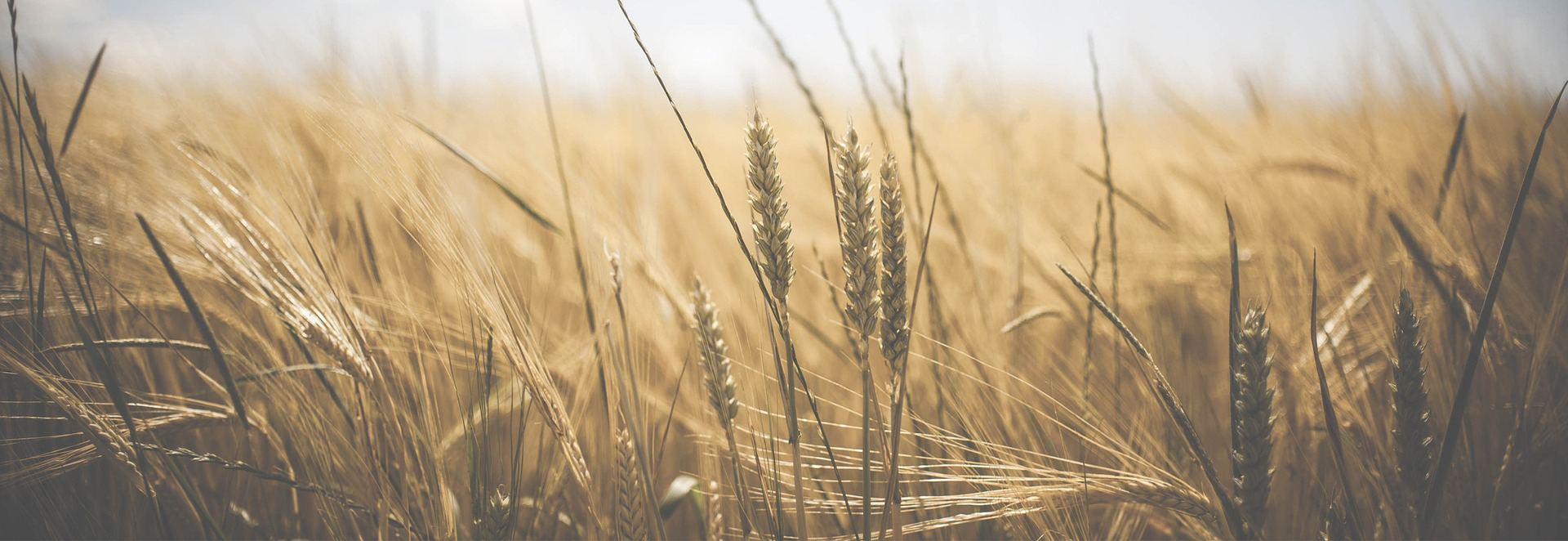
By Dr. Dave Jones, Ph.D., P.A.S
There are two sides to transition cows, the pre-fresh and post-fresh periods. Leading up to, and during, the pre-fresh period many things need to be accomplished by those who manage the cows and the cows themselves. This would include:
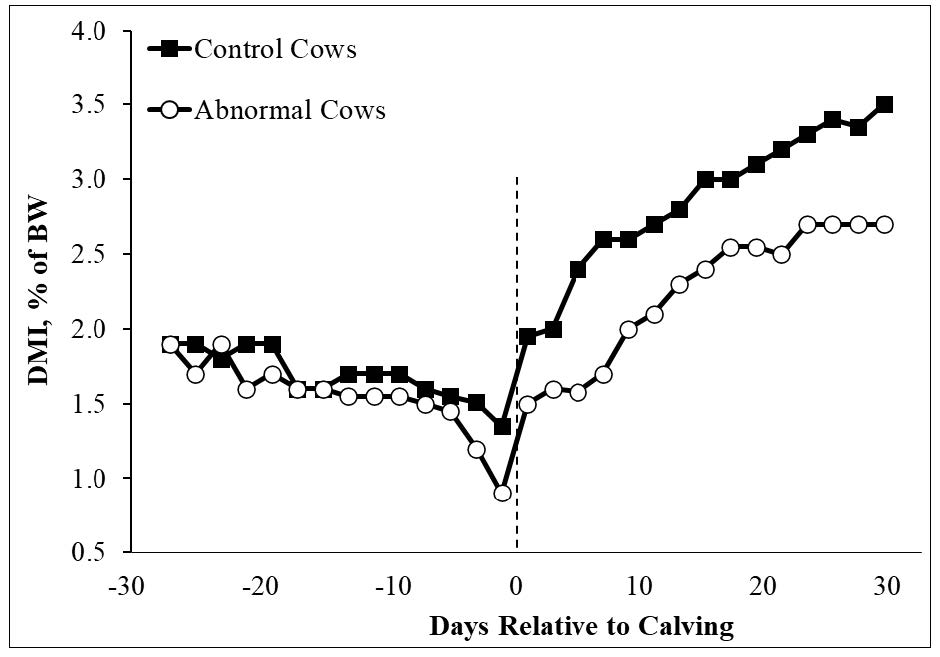
As cows approach their calving date, dry matter intake (DMI) will start to decline. This can be expected to occur somewhere between 7 to 10 days before calving.
If there are any issues with a cow during this time (clinical or subclinical) the decrease in DMI will be exaggerated (Figure 1.), becoming the first step in causing problems for the cow during the transition from gestation to lactation.
We know a reduction in DMI is part of the problem for transition cows, but there is more to the story.
Transition cows also experience immune suppression around calving. Overall stress (environment, diet changes, pen changes, etc.) increases cortisol, an immune suppressor, concentrations in the blood.
In conjunction with this, transition cows experience some level of subclinical disease (e.g. subclinical milk fever). Combined with immune suppression, subclinical disease can lead to clinical disease (Smith et al., 1985).
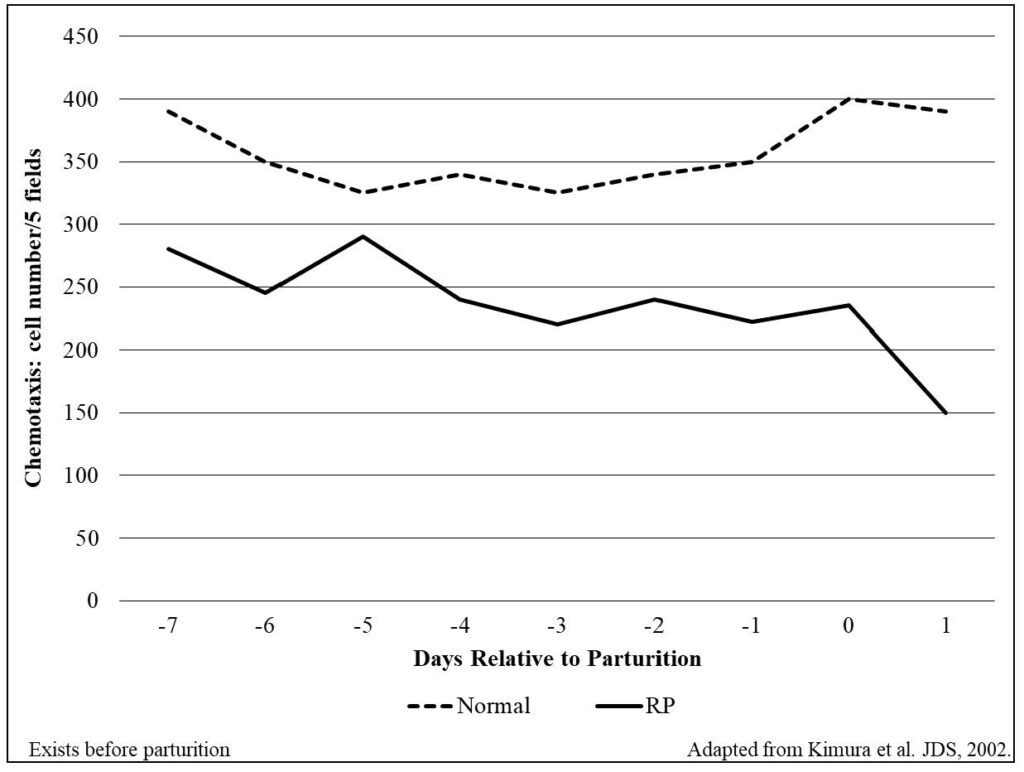
The immune system is vital at calving as it causes inflammation. We often think of inflammation during a ‘disease’ state, but calving requires inflammation.
What we currently know about inflammation and transition cows (Bradford, 2021):
An early spike in inflammation before calving can indicate a cow that will have some problems through the transition (a sick cow). However, a reduced inflammatory response can also lead to some problems, such as retained placenta (Figure 2) that can ultimately lead to other issues.
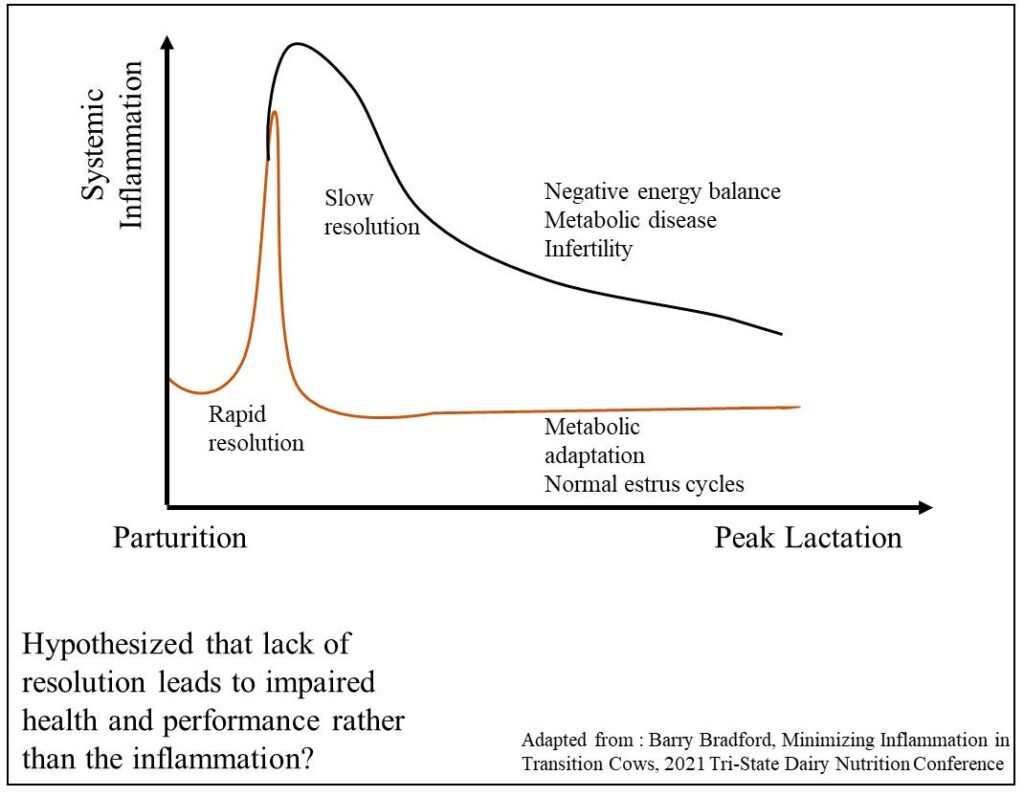
It has been hypothesized (Bradford, 2021) that the lack of resolution of inflammation after calving leads to impaired health and performance rather than inflammation itself (Figure 3).
Severe inflammation suppresses the secretion of major milk components, making it essential for the downregulation of the inflammatory response after calving.
This down-regulation likely needs to occur in the first 3 to 4 days post-calving (Bradford, 2021).
You can find the keys to minimizing transition cow problems within the Agri-King program. Keeping in mind that with the decline in DMI prior to calving the intake of various nutrients also decline.
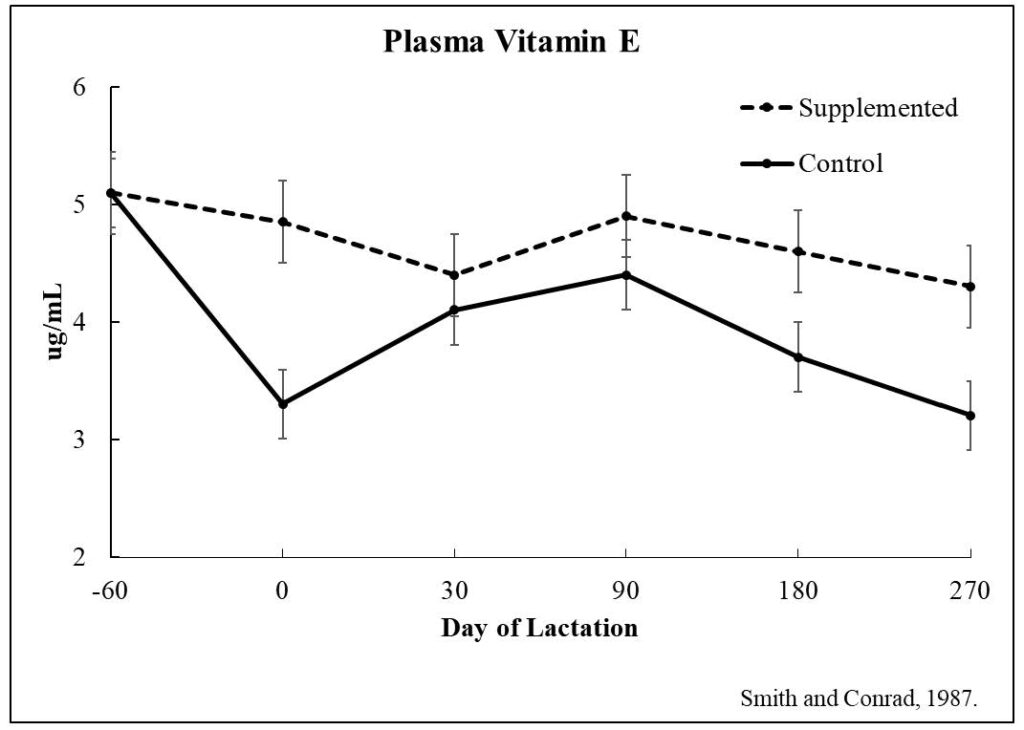
A great example is that of vitamin E (Figure 4). The intake of other antioxidant nutrients (e.g. zinc, copper, manganese), important to the immune system, will decline with DMI.
Therefore, Agri-King’s transition program is designed to supply adequate vitamins and trace minerals, in a bioavailable form, using the appropriate products from the following list:
Rations containing these Agri-King products are balanced for energy and protein (amino acids), along with adequate minerals such as calcium, phosphorus, and magnesium. They use a proper step up in starch to help cows transition from the pre-fresh diet to the post-fresh diet.
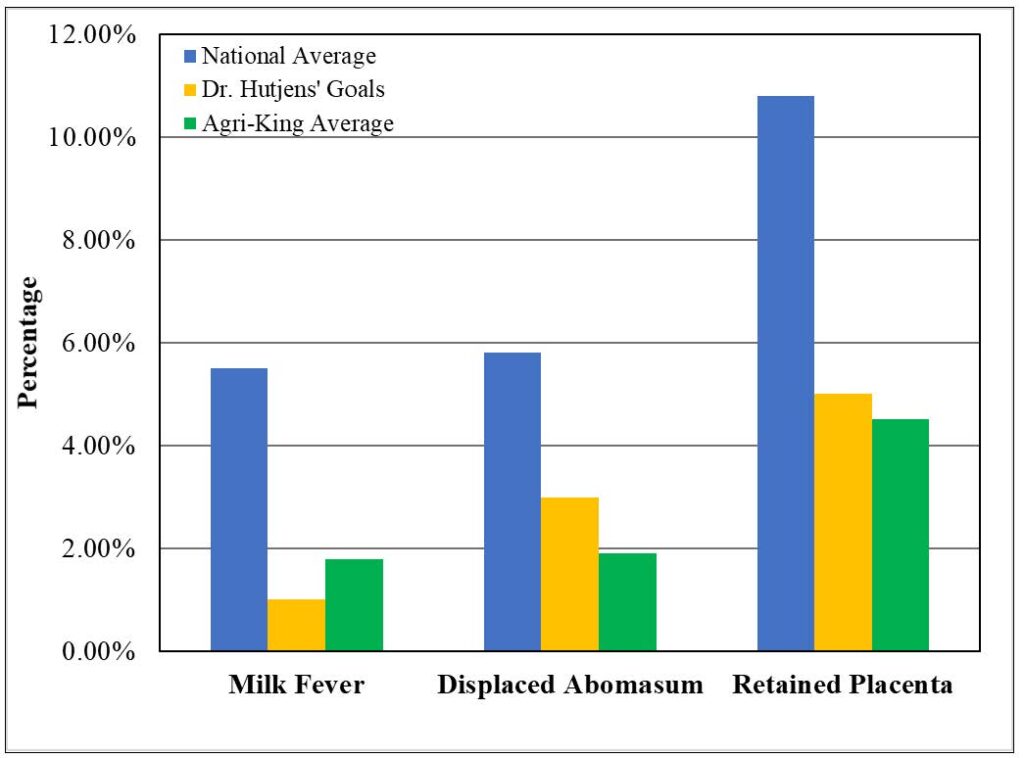
Agri-King’s proprietary pre-fresh cow index (PCI), in conjunction with Dietary Cation Anion Difference (DCAD), helps properly adjust blood acid/base balance before and after calving.
The enzyme products Ru-Mend and Zy-Mend improve the digestibility of the diet, which helps compensate for reduced DMI prior to calving and as DMI tries to catch up with milk production after calving.
The symbiotic product Tri-Lution (a probiotic/prebiotic combination) helps to provide a proper intestinal environment, where 70% of the immune system is located.
Demonstrated results (Figure 5) have been realized using the Agri-King transition program. Contact your local Agri-King Area Manager to find out how Agri-King can help with your transition program. AK
Manure: What Does It Tell Us About The Cow?
Pre-Fresh Cows: Are They Ready to Transition
What is Milk Urea Nitrogen and What Does It Say About The Cow?
New Approaches to Dealing with Mycotoxins
B-Vitamins – Not the B-Team Anymore!